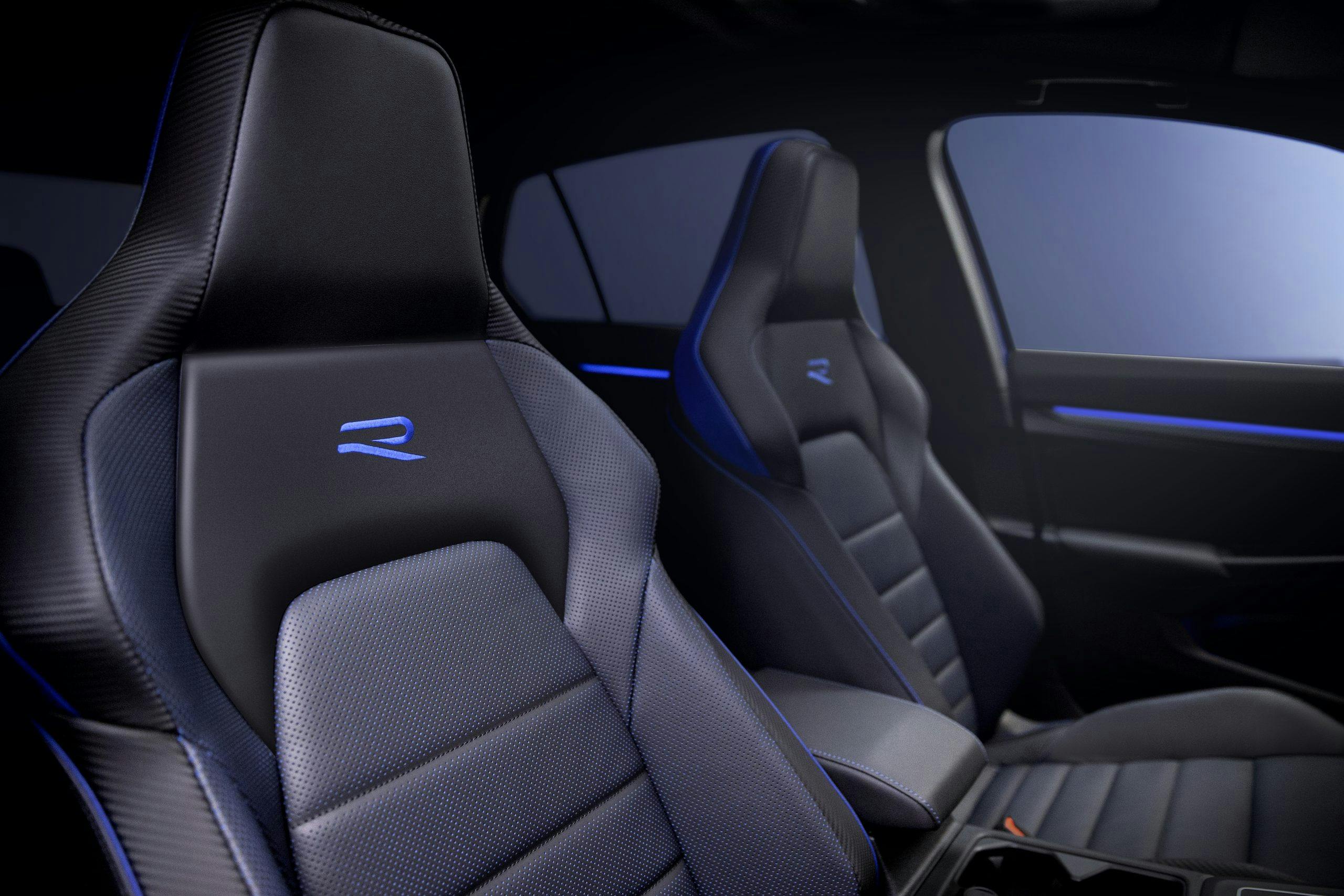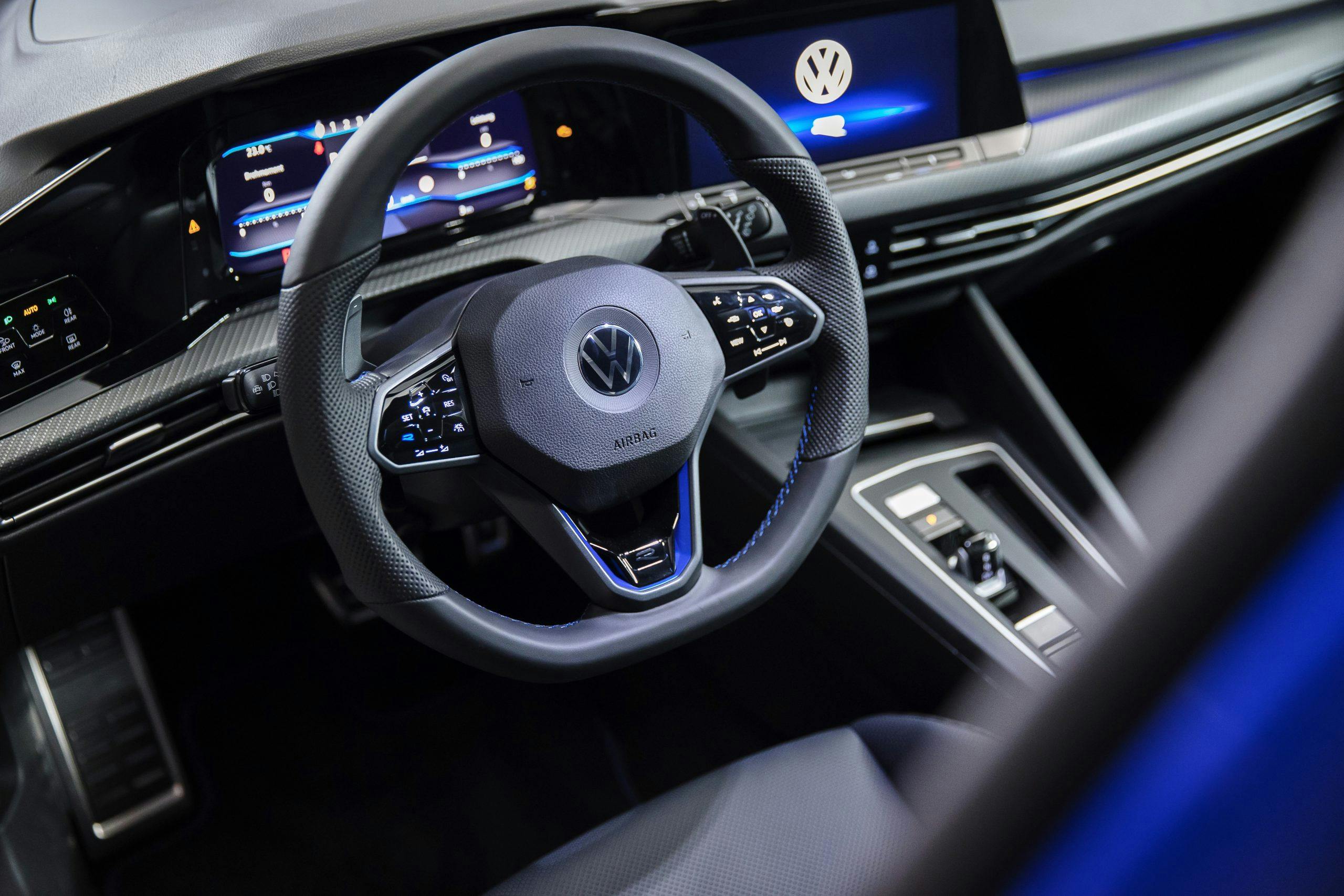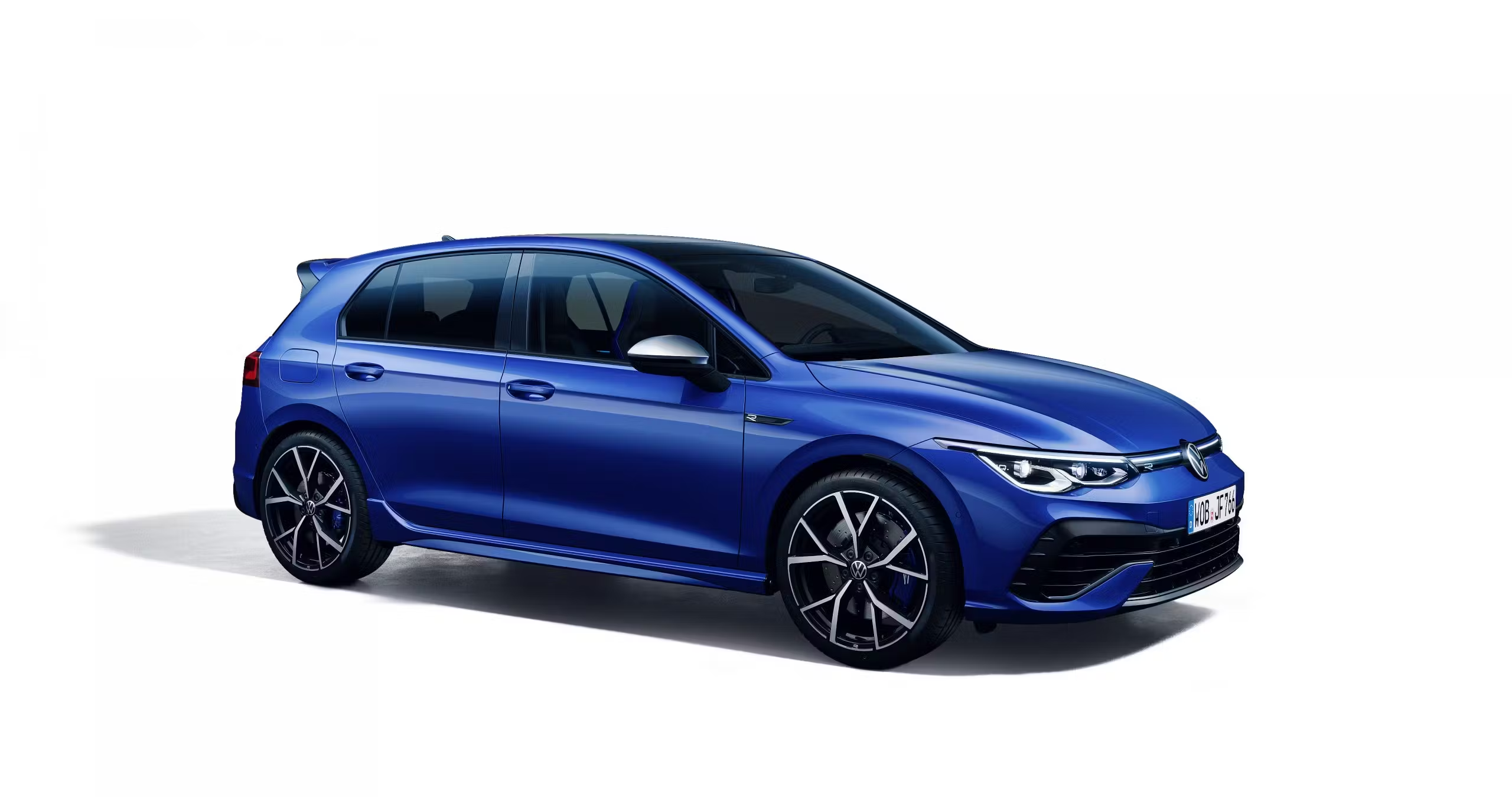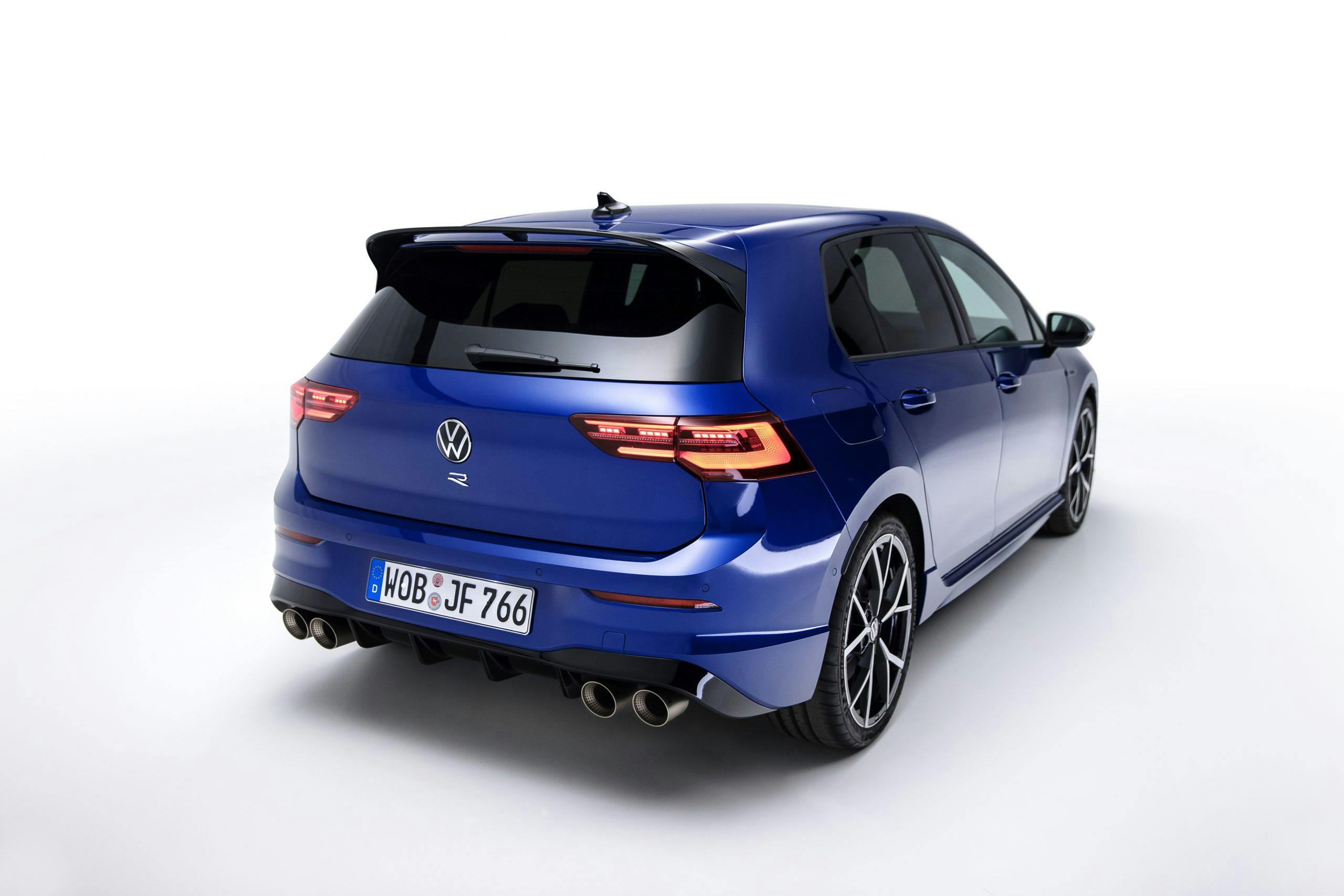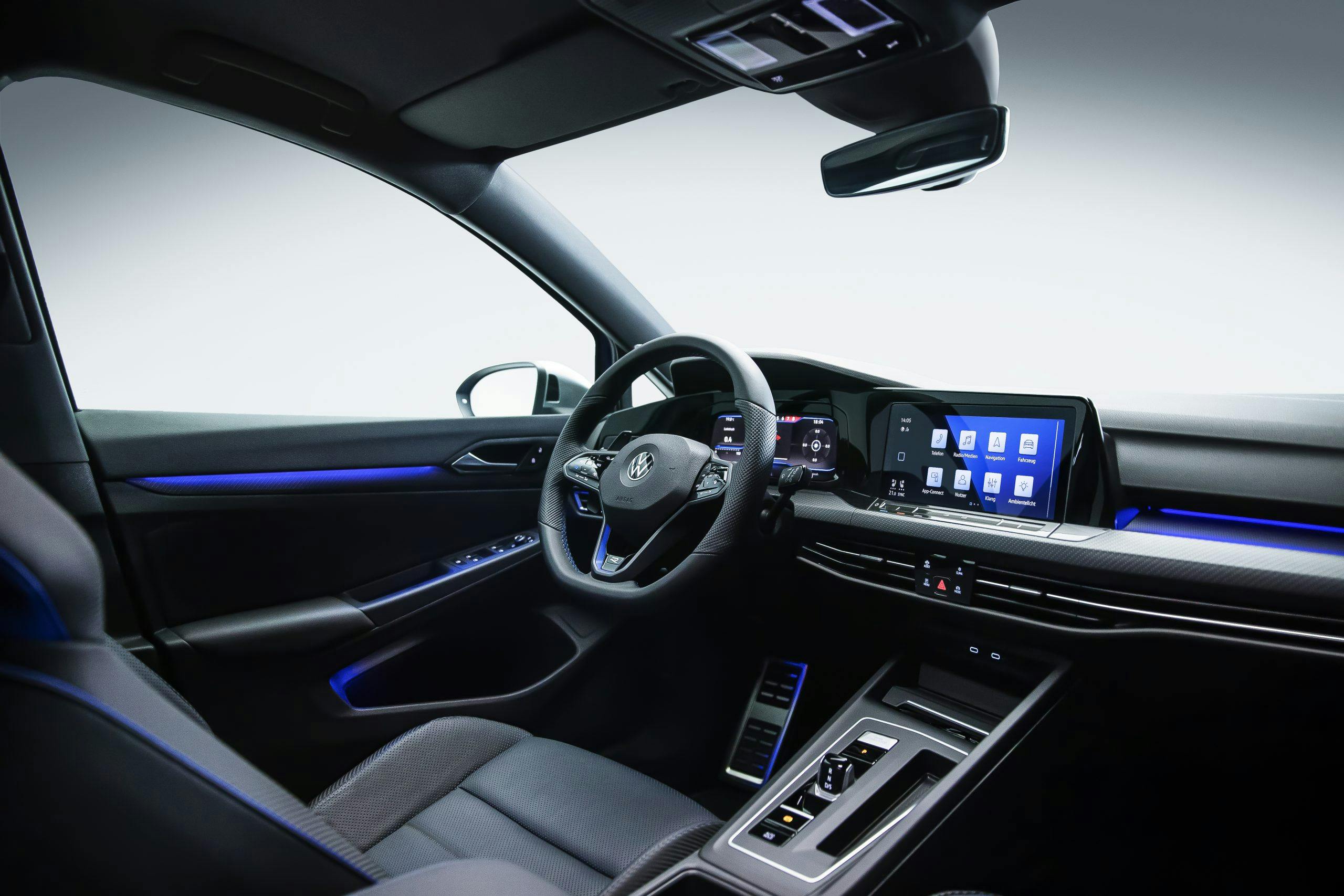Revealed: 2022 Volkswagen Golf R
While the GTI might be the most iconic Golf variant, it’s not the cleanup hitter in the lineup. That honor belongs to the Golf R, which takes the everything we love about the hot hatch formula and adds all-wheel drive (along with more power). Volkswagen just revealed the fifth generation of the Golf R, one of just two variants of the eighth-generation Golf bound for U.S. shores.
At first glance, there’s a lot to like about the latest R. The new front bumper looks purposeful but also subtle enough to maintain the hot hatch’s perennial under-the-radar styling. Look closely, and you’ll notice new R-specific intake grilles and a motorsports-inspired front splitter. Like all new VWs, there’s an LED strip spanning the width of the grille that will act as a daytime running light and signature design element. (Recall that according to Hein Schafer, VW’s senior vice president of product marketing and strategy, “Light is the new chrome.”) At the rear of the vehicle, a new gloss-black diffuser that’s unique to the Golf R rests between two sets of chrome-plated dual-exhaust pipes. There’s also a roof spoiler atop the hatchback to ensure necessary levels of downforce for the rear of the car.
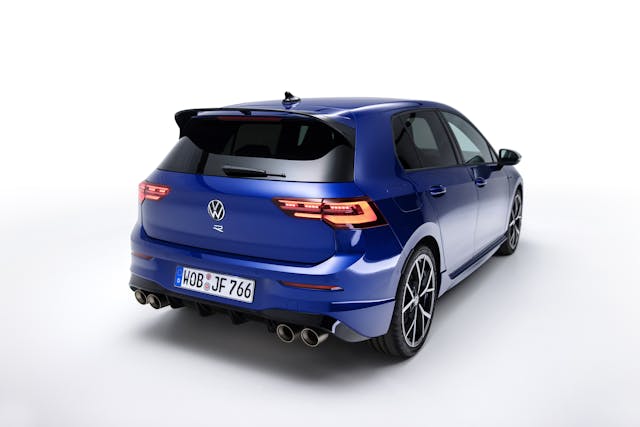
Gone are the days where a two-door hatchback is a viable offering in our market, so like all eighth-gen Golfs, this new R has four doors. All Golf Rs will get 19-inch aluminum-alloy wheels and 235/35 summer tires as standard. Buyers can choose one of three paint colors: The signature Lapiz Blue Metallic, Pure White, or Deep Black Pearl. (Get the blue. Life is not a black-and-white ordeal—your Golf R should reflect that truth.) Matte-chrome side mirror caps and R-exclusive side skirts round out the visual styling cues.
Inside, the Golf R follows the lead from VW’s other recent new models, adding screens and ratcheting up the tech to keep pace with modern tastes. Leading the way are a 10-inch central infotainment screen and a revised Digital Cockpit instrument screen behind the steering wheel—both of which sport plenty of R-specific graphics. The Digital Cockpit can call up everything from a rev counter to a boost gauge, gearbox temp, g-meter, torque distribution map, and navigation map. Sport seats are adorned in Nappa leather with blue accents and the R logo in the backrest of the front buckets. The leather-wrapped sport steering wheel offers touch buttons with haptic feedback and R-specific shift paddles.
Drivers can chose between six driving profiles—Comfort, Sport (the default), Individual, Race, and two R-specific modes: Special and Drift. Toggling between the profiles is as simple as tapping the touch-sensitive R button on the sport steering wheel. A forceful press-and-hold of the R button skips the line and sets the car straight to Race. (More on the profiles in a bit.)
Power comes from the newest version of Volkswagen’s ubiquitous EA888 2.0-liter turbocharged four-cylinder. Although there were rumors the Golf R would boast 329 horsepower, that’s not the case. The engine now makes 315 horsepower, up 27 ponies from the previous Golf R. Torque is up as well, from 280 lb-ft in the previous R to 310 lb-ft here. More importantly, peak shove is available from 2100 rpm all the way to 5350 rpm. There’s variable valve timing on both the intake and exhaust cams, as well as variable valve lift on the exhaust side, all in the name of fine-tuning performance and efficiency.
Three-pedal zealots, rejoice: A six-speed manual transmission is standard on the Golf R, and a seven-speed dual-clutch automatic (DSG) is optional. A DSG-equipped car can scamper to 62 mph from a dead stop in just 4.7 seconds. Volkswagen says that the manual take-rate was nearly 40 percent on the previous-gen car. Do your part to continue that trend.
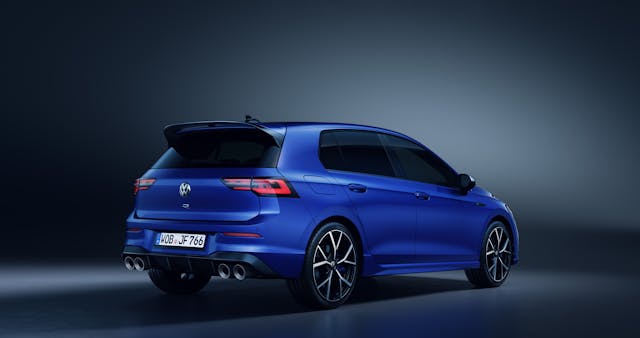
A newly-developed rear differential can now vector torque between the left and right rear wheels, as well as between the front and rear axles like in Golf Rs of yore. The rear diff features two electronically-actuated wet multi-disc clutches—one for each wheel—that open and close to send up to 100 percent of the rear torque to either side. In corners, sending the brunt of the rear torque to the outside wheel helps diminish the understeer that can plague all-wheel-drive cars.
The R’s suspension adjustments drop the overall ride height 0.8 inches relative to other Mk. 8 Golfs. The MacPherson-style front struts feature increased negative camber to aid cornering behavior, while a new aluminum front subframe is some six-and-a-half pounds lighter than the part it replaces. Out back, a multi-link rear suspension boasts new control arm mounts and damper bearings. Spring and anti-roll bar rates increase by 10 percent at both ends, and the vehicle’s Dynamic Chassis Control (DCC) suspension software has been reworked for maximum performance. Two-piston front calipers clamp down on larger, 14.1-inch brake rotors, up from the previous-gen car’s 13.1-inch discs.

There’s a new brain controlling the behind-the-scenes software; Volkswagen calls it the Vehicle Dynamics Manager (VDM). As the driver toggles through the aforementioned six driving profiles, the VDM is in charge of making the various software systems work in concert with one another. For Drift mode, that means stoking the rear diff to misbehavior while backing off the Electronic Stability Control (ESC). Don’t get it twisted—Drift mode is not a rear-wheel-drive mode. A maximum of 50 percent of the engine’s torque can be sent rearward. Drift mode simply increases the car’s propensity to stuff that 50 percent to the outer wheel, thus inducing a bit of oversteer.
Special mode is a direct result of the Golf R’s development time at the Nürburgring Nordschleife. When selected, the car’s systems will assume the same settings that enabled an Mk. 8 Golf R with a DSG automatic to run the Nordschleife in 7:51, according to internal timing—some 17 seconds quicker than its predecessor. Of course, that car also had ultra-sticky Michelin Pilot Sport Cup 2 R tires, which won’t be offered here in the states. Don’t go thinking you could come anywhere near that time, even with a somewhat novel “Ring Mode” drive setting.
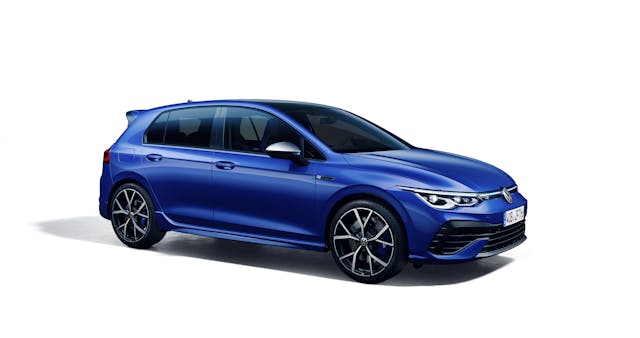
Volkswagen says that, like the forthcoming GTI, the new Golf R won’t arrive until the back end of 2021 as a 2022 model-year offering. The newest versions of both hot hatches will be assembled at the same factory in Wolfsburg, Germany, instead of at VW’s Puebla, Mexico facility as in recent generations past. Between the production facility change and the spiffy new tech, expect the new Golf R to cost more than the one it replaces, perhaps by a considerable margin. To help ease that price jump, U.S.-bound Golf Rs will be loaded with most options (think sunroofs) as standard.
We’re glad to see another generation of the Golf R headed our way. As older Golf generations begin to catch the eyes of collectors—a clean first-gen Golf R32 recently brought over $65,000 at auction—it’s clear that the R still has cachet with enthusiasts. Between the new R and the GTI, VW’s most ardent hatchback fans have not been neglected.

